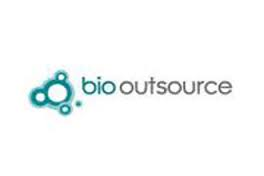New video on ADCC assays from BioOutsource

Rapidly reveals the factors to consider when using ADCC assays for producing precise biosimilar comparability data.
Sartorius Stedim Biotech (SSB) BioOutsource has announced a new video is now available on-line explaining how to overcome the issues associated with using antibody-dependent cell-mediated cytotoxicity (ADCC) assays. The bite-sized video outlines the factors affecting the use of ADCC assays and discusses what to consider when determining comparability and designing biosimilar drugs.
In just five minutes, bioassay development experts, Dr Catriona Thomson and Dr Daniel Galbraith describe in this engaging video the challenges of using ADCC assays and explain when to use the different types of assay to assess biosimilars.
Dr Thomson lists four key reasons why ADCC activity is the greatest road-block to achieving approval of biosimilars and, with real ADCC assay data, shows what a biosimilar which has poor comparability to the innovator molecule looks like.
Dr Daniel Galbraith then rapidly reveals the science behind ADCC assays and describes with real data how different types of effector cell can dramatically affect biological relevance and sensitivity. This provides scientists with a quick snap-shot as to what ADCC assay format is most relevant for the current stage of their biosimilar’s development.
In short, the video offers researchers an excellent resource that they can view on their smartphone, tablet or computer of factors to consider when using ADCC assays for an accurate comparison of biosimilars to innovator molecules.
To access the informative video, go to: http://ow.ly/UvNBj
Dr Daniel Galbraith, Chief Scientific Officer of BioOutsource commented: “Having a biosimilar and an innovator molecule with different ADCC activity can result in costly changes to the manufacturing process and delays with regulatory approval. It is therefore vital to understand at the earliest stage of development the types of ADCC assay available to prove comparability.”
Galbraith continued: “We’re delighted to make this new video available as it explains in simple terms some of the complicated technical factors that affect how an ADCC assay will perform. Scientists that watch the video will have a better understanding of ADCC assays and this will help guide them to methodologies for developing biosimilars with fingerprint like similarity to the innovator molecule.”
Related News
-
News Patients vs Pharma – who will the Inflation Reduction Act affect the most?
The Inflation Reduction Act brought in by the Biden administration in 2022 aims to give better and more equitable access to healthcare in the USA. However, pharma companies are now concerned about the other potential costs of such legislation. -
News CPHI Podcast Series: What does the changing US Pharma market mean for industry and patients alike?
In this week's episode of the CPHI Podcast Series Lucy Chard, Digital Editor for CPHI Online is joined by James Manser to discuss the political and market changes in the US pharma field. -
News CPHI Barcelona Annual Report illuminates industry trends for 2024
The CPHI Annual Survey comes into it’s 7th year to report on the predicted trends for 2024. Over 250 pharma executives were asked 35 questions, with their answers informing the industry landscape for the next year, spanning all major pharma marke... -
News Which 10 drugs are open to price negotiation with Medicare in the USA?
The Centres for Medicare & Medicaid Services, under the Biden administration in the USA, has released a list of the 10 drugs that will be open to price negotiations as part of the new legislation under the Inflation Reduction Act (IRA). -
News EU Medical Devices Regulation causes unintended disappearances of medical devices for children, doctors state
Doctor groups and associations have appealed to the EU to correct the EU Medical Devices Regulation law that may cause unintended shortages of essential drug and medical devices for children and rare disease patients. -
News 10 Major Drug Approvals So Far in 2023
Last year, 37 novel drugs were approved by the FDA, this was a high number for such a category, and covered many fields including oncology, demonstrating how promising further research is, and how it is only continuing to build. To date, there are alre... -
News Detecting Alzheimer's disease with a simple lateral flow test
A novel rapid diagnostic test for early-stage Alzheimer's disease has been developed using a biomarker binder from Aptamer Group along with technology from Neuro-Bio, the neurodegenerative disease experts. -
News CPHI Podcast Series: outsourcing and manufacturing trends
Listen to the CPHI Podcast Series this June to hear Gil Roth of the PBOA speak with Digital Editor Lucy Chard about the biggest trends and topics to watch in pharma outsourcing and manufacturing at the minute.
Position your company at the heart of the global Pharma industry with a CPHI Online membership
-
Your products and solutions visible to thousands of visitors within the largest Pharma marketplace
-
Generate high-quality, engaged leads for your business, all year round
-
Promote your business as the industry’s thought-leader by hosting your reports, brochures and videos within your profile
-
Your company’s profile boosted at all participating CPHI events
-
An easy-to-use platform with a detailed dashboard showing your leads and performance







